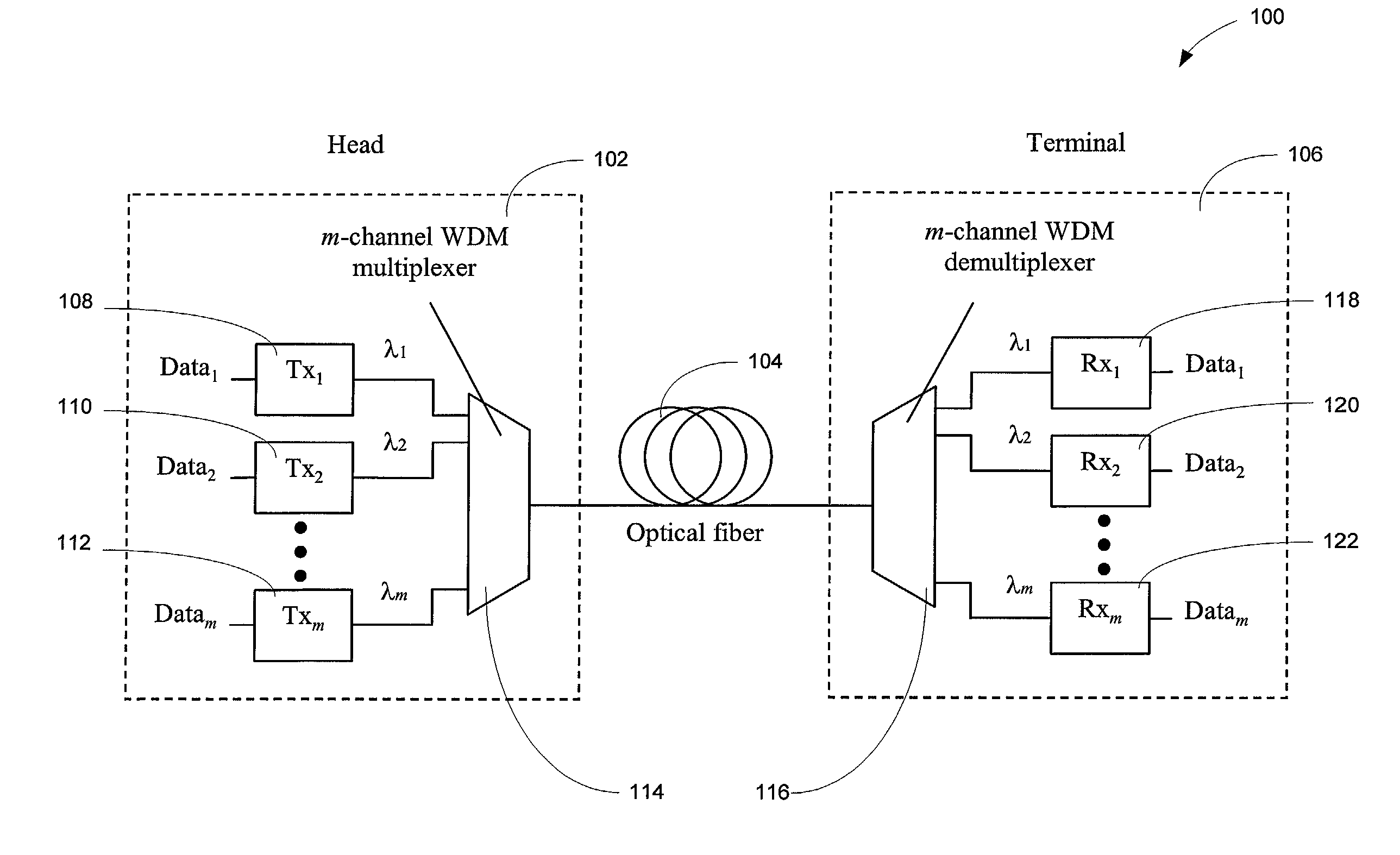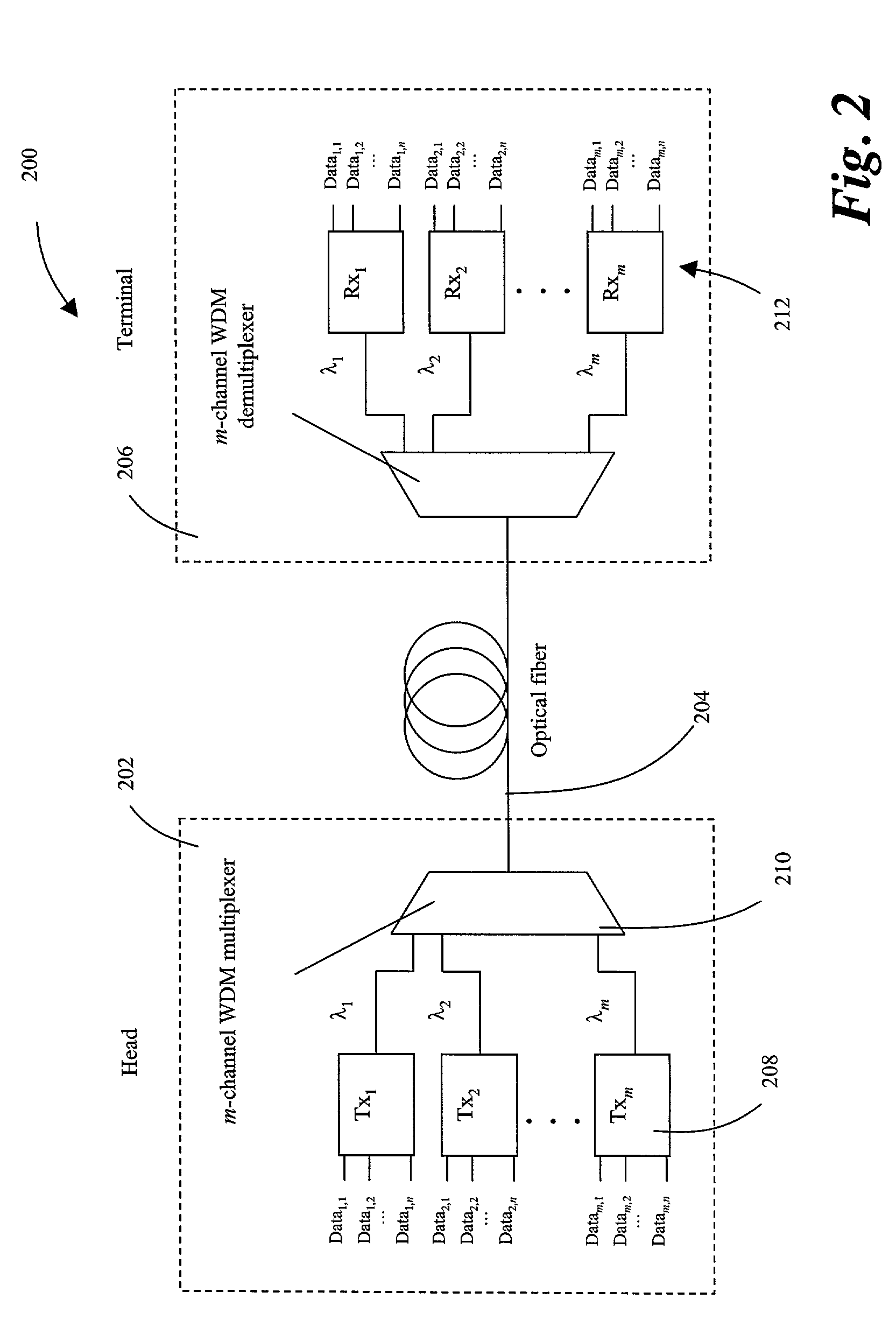Increasing data throughput in optical fiber transmission systems
a technology of optical fiber transmission system and data throughput, which is applied in the field of optical fiber communication system, can solve the problems of limiting the aggregate power that can be transmitted through a single dwdm optical fiber, placing limits on the aggregate launch power, and limiting the number of wdm channels that can be combined for transmission on a single fiber, so as to increase channel data throughput and increase the aggregate throughput of fiber optic links. , the effect of increasing the channel data throughput ra
- Summary
- Abstract
- Description
- Claims
- Application Information
AI Technical Summary
Benefits of technology
Problems solved by technology
Method used
Image
Examples
Embodiment Construction
[0039]Exemplary embodiments of the present invention enable an increase in channel data rates without the replacement of an existing optical fiber plant. Various embodiments of the present invention use a novel multilevel modulation technique to effect a substantial increase in data rate. Advantageously, various embodiments of the present invention enable a substantial data throughput increase in a fiber optics communication system without requiring a modification of the optical fiber plants associated with the system. Specifically, the increase in data rate can be accomplished in various embodiments of the present invention by upgrading head and terminal components, namely, the system transmitters and receivers. The transmitters and receivers can be modified to include advanced 2n-ary modulation (demodulation) technology for encoding (decoding) greater amounts of data within the channel spectrum. Representative advanced modulation techniques include multilevel amplitude, frequency ...
PUM
 Login to View More
Login to View More Abstract
Description
Claims
Application Information
 Login to View More
Login to View More - R&D
- Intellectual Property
- Life Sciences
- Materials
- Tech Scout
- Unparalleled Data Quality
- Higher Quality Content
- 60% Fewer Hallucinations
Browse by: Latest US Patents, China's latest patents, Technical Efficacy Thesaurus, Application Domain, Technology Topic, Popular Technical Reports.
© 2025 PatSnap. All rights reserved.Legal|Privacy policy|Modern Slavery Act Transparency Statement|Sitemap|About US| Contact US: help@patsnap.com



